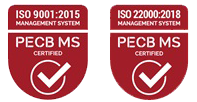Carbon dioxide (CO2) has been a vital industrial gas for centuries. Its uses range from carbonation and food preservation to industrial processes and medical applications. As demand for CO2 continues to grow, innovation in production methods is essential to meet increasing needs while minimizing environmental impact.
This blog post will explore the history of CO2 production, current advancements at AIML, and the future trends shaping the industry.
The History of CO2 Production Methods
The earliest methods of CO2 production involved the fermentation of organic matter, such as molasses or sugar beets. The resulting gases were then captured and purified. Over time, other methods emerged, including:
- Combustion: Burning fossil fuels like natural gas or coal produces CO2 as a byproduct.
- Chemical reactions: Certain chemical reactions generate CO2, such as the decomposition of carbonates.
- Geothermal sources: Capturing CO2 from geothermal wells.
Current Advanced Technologies Used by AIML
AIML is at the forefront of CO2 production technology, utilizing advanced methods to ensure high-quality and sustainable production. Some of the key technologies employed by AIML include:
- Membrane Gas Separation: This process uses semi-permeable membranes to separate CO2 from other gases, producing a highly purified product.
- Absorption: Absorption technology uses a solvent to capture CO2 from a gas mixture. The CO2 is then released from the solvent through heating or pressure reduction.
- Adsorption: Adsorption uses solid materials to capture CO2 molecules from a gas stream. The CO2 is then desorbed through heating or pressure reduction.
The Future of Innovation in CO2 Extraction and Purification
As demand for CO2 continues to grow, research and development efforts are focused on developing even more efficient and sustainable production methods. Some potential future trends include:
- Carbon Capture and Utilization (CCU): CCU technologies aim to capture CO2 emissions from industrial processes and use them to produce valuable products such as fuels, chemicals, or building materials.
- Bio-Based CO2 Production: Exploring biological processes to produce CO2, such as fermentation of organic matter or algae cultivation.
- Advanced Membrane Technologies: Developing new membrane materials with improved selectivity and efficiency for CO2 separation.
- Energy-Efficient Purification: Investing in research to develop more energy-efficient purification processes.
- Direct Air Capture (DAC): DAC technologies capture CO2 directly from the atmosphere, offering a potential solution for climate change mitigation.
Conclusion
The production of CO2 has come a long way, with significant advancements in technology and efficiency. AIML is proud to be at the forefront of this evolution, utilizing state-of-the-art methods to produce high-quality food-grade CO2.
As demand for CO2 continues to grow, innovation will be essential to meet future needs while ensuring sustainability and minimizing environmental impact. We are excited to be part of this journey and look forward to the continued development of CO2 production technologies.


